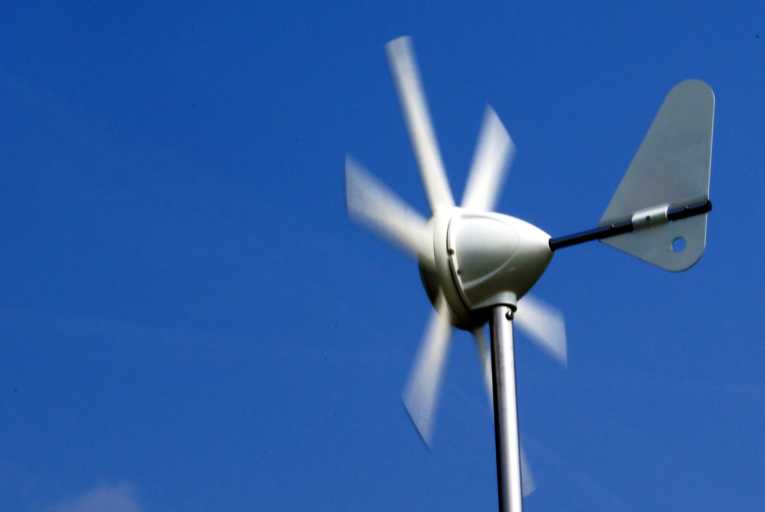Among the eight Millennium Development Goals (MDGs) that all 192 members of the United Nations have signed up to achieve by 2015 is the target of significantly increasing the number of people with access to a reliable energy source, no matter where they are in the world.
As with all of the MDGs, this is hugely ambitious (some would say overly so). Indeed, to gain an appreciation of the task facing the international community, the World Bank's figures show that, with only five years left until the self-imposed deadline for the accomplishment of the targets, some 1.4 billion people worldwide still have no direct access to a power source. Additionally, hundreds of millions more only have access to unreliable sources of energy, hampering health drives, education and economic development in the places where these are needed the most.
As if the challenge laid out by the eight goal wasn't hard enough - it also calls for widespread access to the internet and personal computers and not just basic electricity connections - then goal number seven calls for 'sustainable development'. That is, according to the goals, significantly-enhanced access to reliable and affordable energy must be achieved in a sustainable way, with forests protected, carbon emissions kept to a minimum, water sources kept clean and wildlife safeguarded.
So, how does the international community deliver 'power to the people' without derailing ongoing efforts to avert catastrophic climate change? Well, according to experts gathered at the Dana Centre in London for a seminar on the role of sustainable energy in the developing world, the solution lies with localised off-scale green energy initiatives.
For a start, explains Dr Alison Doig, Christian Aid's senior advisor on climate change, the large scale, centralised power grids in place in the developed world have two downsides. Firstly, and perhaps most importantly, they are high polluters, pumping out huge volumes of carbon emissions and thereby helping to drive climate change. Secondly, such grids are generally unable to reach into developed communities, leaving millions without any power.
In comparison, off-grid initiatives such as micro-hydroelectric, solar or wind power are by and large carbon neutral once the technology is in place and can be installed in even the most-remote communities on the planet. Furthermore, citing case studies from his native Peru, Practical Action's Teodoro Sanchez explains that the greener the energy source, the more efficient and the more beneficial in terms of helping communities develop economically. For example, wood and charcoal are relatively heavy polluters and also costly, both in terms of the up-front expense of buying them and the fact that the time needed to collect such fuel could be used engaged in other money-making activities. Conversely, electricity generated by a wind turbine has the dual advantages of being both green and helping to spur the local economy through requiring little time or effort.
So then, why are small-scale sustainable energy solutions such as wind power not being rolled out right across the developing world on a major scale? According to Sanchez, there are several main obstacles standing in the way of achieving this, not least financial restrictions and a lack of localised capacity to look after renewables technology in the long-run.
Notably, while the long-term goal may be enabling local communities, the best means of achieving this, the experts argue, is through a 'top-down' approach, with the World Bank in particular singled out as having the power to deliver reliable energy to the developing world without placing international climate change goals in jeopardy.
''The World Bank is already a big player in trying to stimulate off-grid technology,'' Dr Diog says, ''However, the focus is still very much on 'billion dollar projects' like extracting gas from the Andes and shipping it to Mexico.''
''The Bank now needs to make smaller, million dollar projects its priority. Remember, there are still 1.4 billion people living without electricity, so it needs to scale-up its efforts and focus on helping them.''
Addressing the longer-term challenge of ensuring communities in the developing world have the capacity to oversee the upkeep of renewable energy technology themselves rather than rely on the funding and expertise of developed nations, then the general consensus is that individual projects should have several, preferably rather diverse stakeholders on board. Such an approach would ensure that, even if one party were to lose its economic muscle or simply its interest, a back-up would be in place to ensure the longer-term viability of a scheme, with locals always in the driving seat.
Clearly, the challenge facing NGOs, international bodies and national governments is substantial. But nevertheless, at this seminar at least, the mood is one of optimism. As After all, as Srinivas Krishanaswary of the Indian development charity the Vasudha Foundation maintains, small-scale off-grid projects have been proven to complement larger-scale grids, both in terms of providing cheap and reliable energy while also keeping carbon emissions to a minimum. Indeed, where any projects have fallen short, this has been due to its leaders adopting the wrong method rather than any shortcomings of the green energy technology itself.
''In the end, it's just about finding the right technology for the right place and having the right systems in place to support this.''










